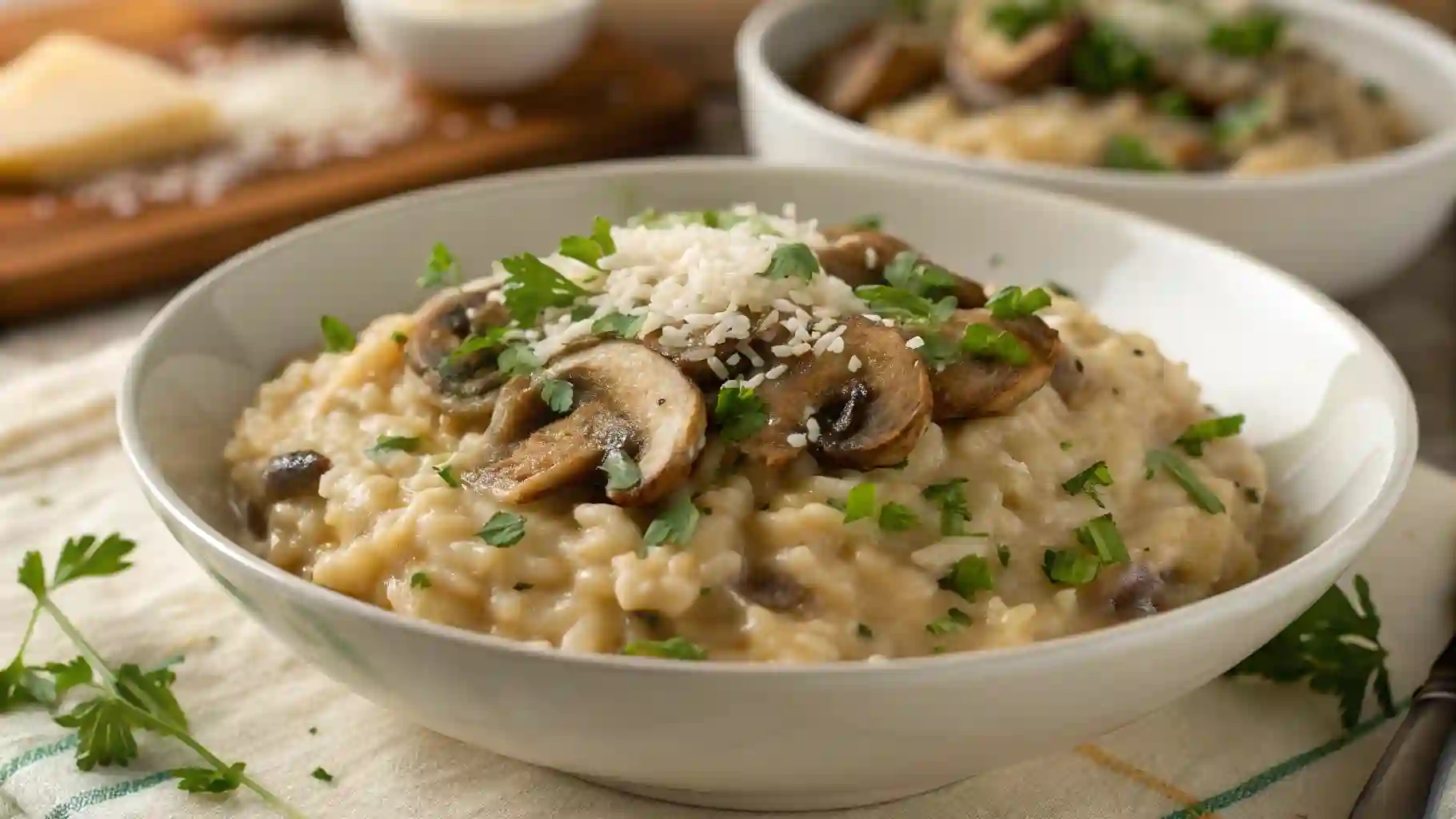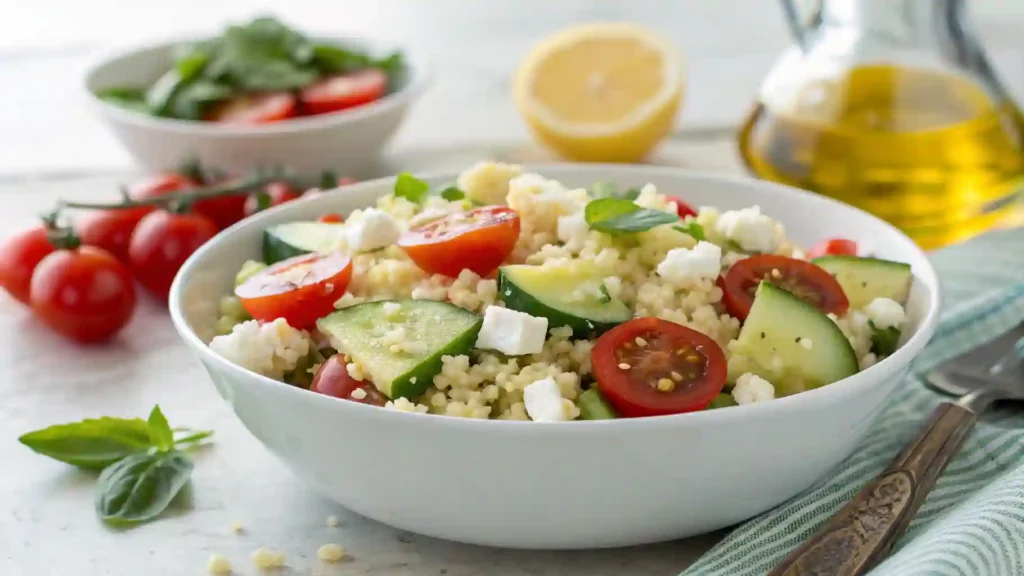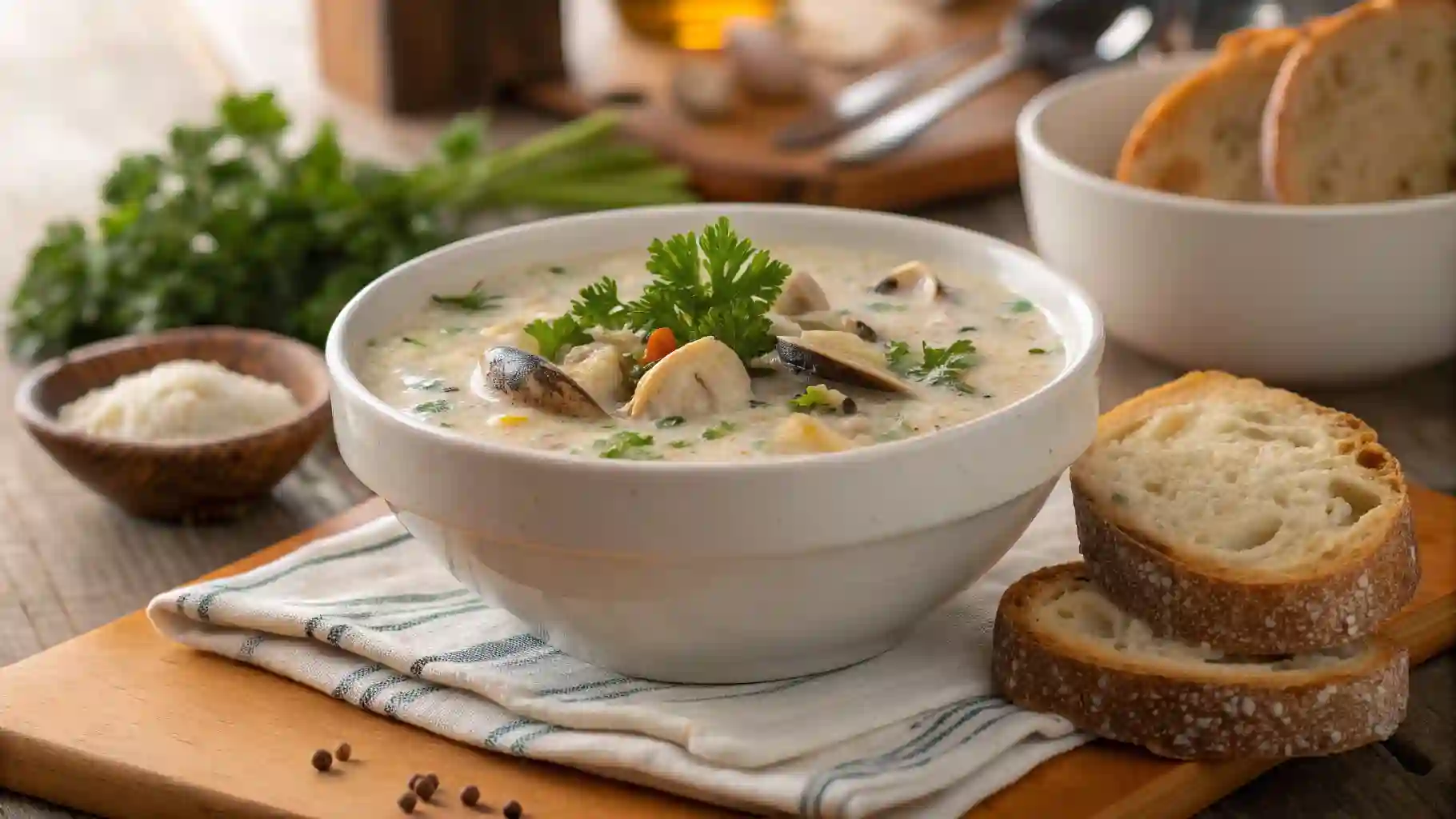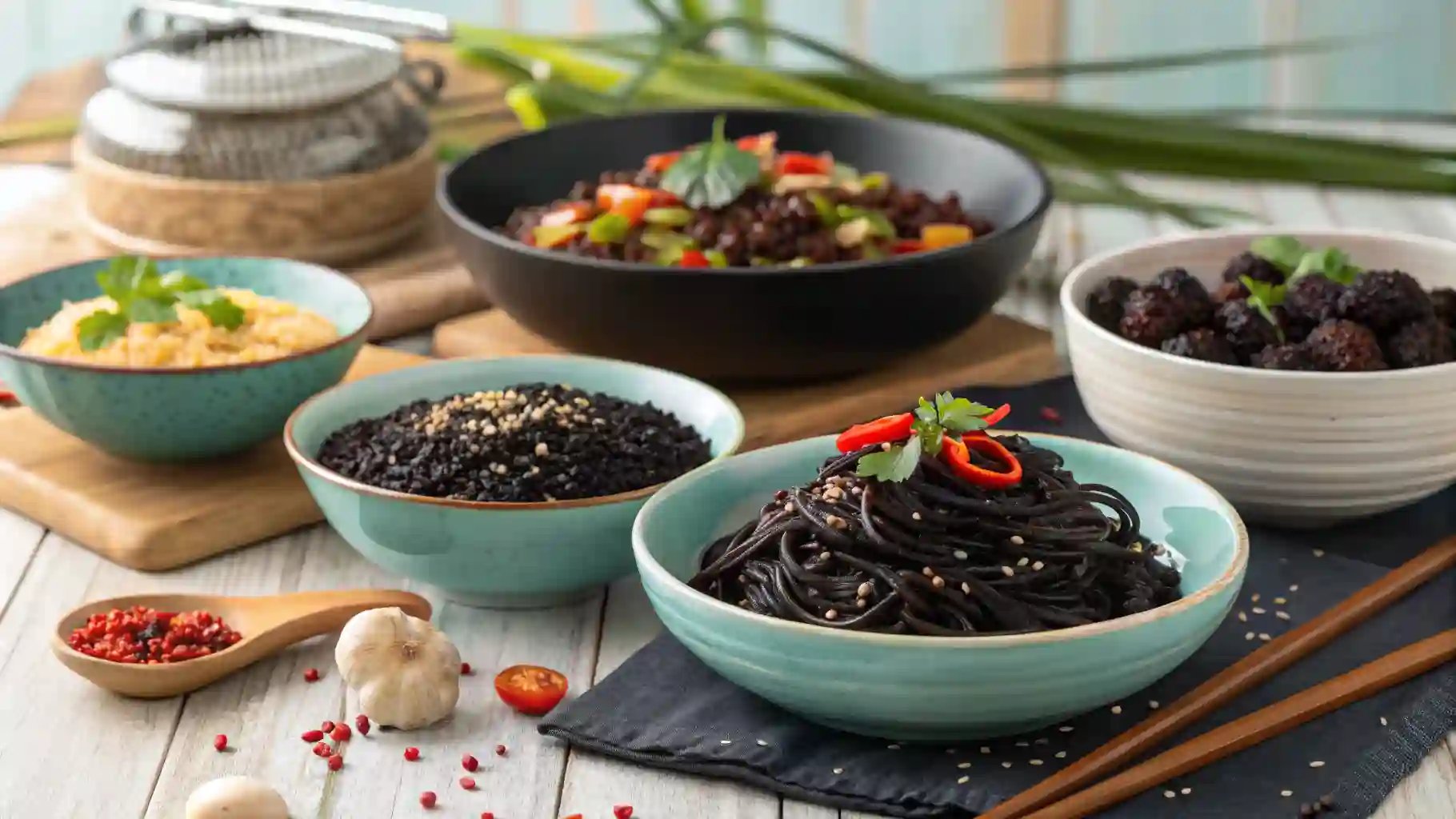Arborio rice is more than just a staple in Italian cuisine—it’s a culinary superstar that brings creamy, velvety textures to dishes like risotto and rice pudding. But what makes this short-grain rice so special? In this comprehensive guide, we’ll dive into the origins, nutritional benefits, and cooking techniques of arborio rice. You’ll also discover how it stacks up against other rice varieties, explore delicious recipes, and learn tips for buying and storing it. Whether you’re a seasoned chef or a home cook, this article will help you unlock the full potential of arborio rice in your kitchen.
What is Arborio Rice?
Origins and History of Arborio Rice
Arborio rice hails from the Piedmont region of Italy, specifically named after the town of Arborio. This short-grain rice has been cultivated for centuries, prized for its ability to absorb liquids while maintaining a firm, chewy texture. Its unique starch content makes it a standout ingredient in creamy dishes like risotto, a classic Italian favorite.
Characteristics of Arborio Rice: Texture and Flavor Profile
What sets arborio rice apart is its high amylopectin starch content, which gives it that signature creamy consistency when cooked. Unlike long-grain varieties, arborio rice has a plump, oval shape that softens beautifully while retaining a slight bite. Its mild, slightly nutty flavor makes it a versatile base for both savory and sweet dishes.
Why Arborio Rice is Perfect for Risotto
If you’ve ever wondered why risotto recipes always call for arborio rice, the answer lies in its starch. As the rice cooks, it releases starch slowly, creating a rich, velvety sauce without the need for heavy cream. This makes it the ideal choice for achieving the perfect risotto texture—creamy yet al dente.
Whether you’re making a classic mushroom risotto or experimenting with new flavors, arborio rice is your go-to ingredient for dishes that are both comforting and elegant.
Nutritional Benefits of Arborio Rice
Macronutrient Breakdown: Carbs, Protein, and Fats
Arborio rice is primarily a source of carbohydrates, making it an excellent energy booster. A single cup (about 180 grams) of cooked arborio rice contains approximately 44 grams of carbs, 4 grams of protein, and less than 1 gram of fat. While it’s not a high-protein food, its carb content provides sustained energy, making it a great option for active individuals.
Vitamins and Minerals in Arborio Rice
Though arborio rice is not as nutrient-dense as brown rice, it still offers essential vitamins and minerals. It contains small amounts of iron, which supports oxygen transport in the blood, and magnesium, which aids muscle and nerve function. Additionally, it provides B vitamins like thiamine and niacin, which are crucial for metabolism and overall energy production.
Health Benefits of Including Arborio Rice in Your Diet
Including arborio rice in your diet can offer several health benefits. For starters, its easily digestible nature makes it gentle on the stomach, ideal for those with digestive sensitivities. Moreover, its high starch content can help replenish glycogen stores after intense physical activity. While it’s not a low-calorie food, its versatility allows it to be paired with nutrient-rich ingredients like vegetables, lean proteins, and healthy fats to create balanced meals.
| Nutrition Facts (Per 1 Cup Cooked Arborio Rice) | Quantities |
|---|---|
| Calories | 242 |
| Carbohydrates | 44g |
| Protein | 4g |
| Fat | 0.8g |
| Iron | 2% DV |
| Magnesium | 6% DV |
| Thiamine (Vitamin B1) | 8% DV |
How to Cook Arborio Rice Perfectly

Essential Tools for Cooking Arborio Rice
To cook arborio rice like a pro, you’ll need a few key tools: a heavy-bottomed pot or skillet (to distribute heat evenly), a wooden spoon (to stir without breaking the grains), and a ladle (for adding broth gradually). These tools ensure that your rice cooks evenly and achieves that signature creamy texture.
Step-by-Step Guide to Cooking Arborio Rice for Risotto

- Toast the Rice: Start by heating a tablespoon of olive oil or butter in your pot. Add 1 cup of arborio rice and toast it for 2-3 minutes until the grains become slightly translucent.
- Deglaze with Wine: Pour in ½ cup of white wine (optional) and stir until absorbed. This step adds depth to the flavor.
- Add Broth Gradually: Begin adding warm broth (about 4-5 cups) one ladle at a time, stirring constantly. Allow each addition to be absorbed before adding the next.
- Finish with Butter and Cheese: Once the rice is tender but still al dente (about 18-20 minutes), remove from heat. Stir in 2 tablespoons of butter and ½ cup of grated Parmesan cheese for extra creaminess.
Common Mistakes to Avoid When Cooking Arborio Rice
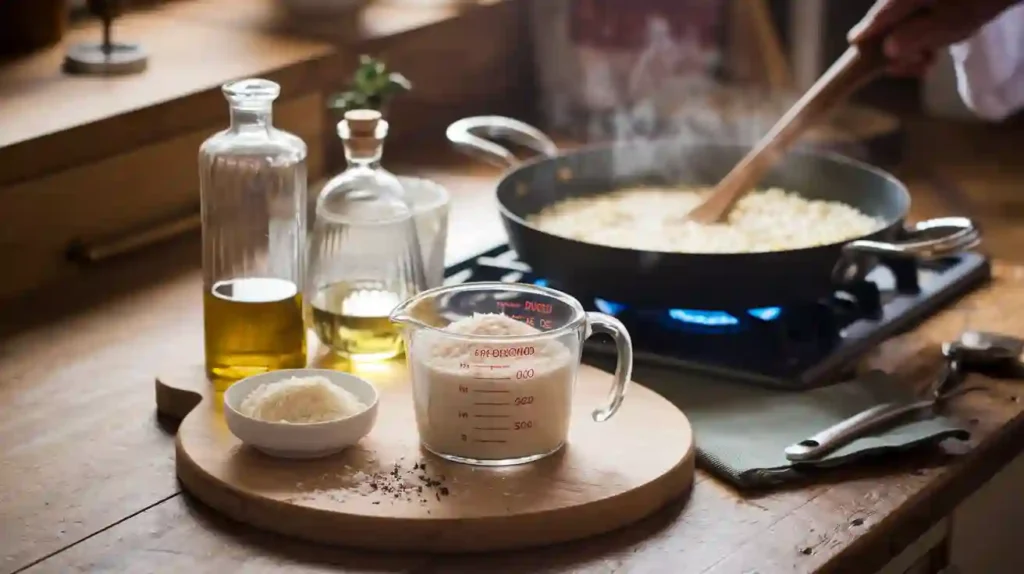
- Overcrowding the Pot: Use a wide pot to allow even cooking and absorption.
- Rushing the Process: Adding broth too quickly can result in mushy rice. Patience is key!
- Skipping the Toast: Toasting the rice enhances its nutty flavor and prevents it from becoming gummy.
| Ingredients for Basic Risotto | Quantities |
|---|---|
| Arborio Rice | 1 cup |
| Olive Oil or Butter | 1 tbsp |
| White Wine (optional) | ½ cup |
| Chicken or Vegetable Broth | 4-5 cups |
| Grated Parmesan Cheese | ½ cup |
| Salt and Pepper | To taste |
By following these steps, you’ll master the art of cooking arborio rice and create dishes that are both delicious and impressive.
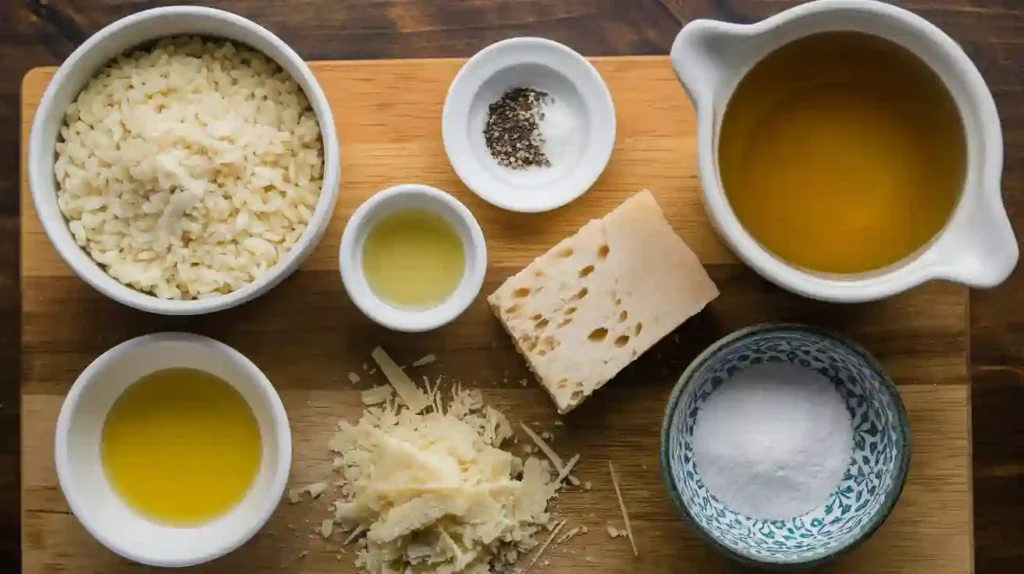
Arborio Rice vs. Other Rice Varieties
Arborio Rice vs. Regular White Rice: Key Differences
When comparing arborio rice to regular white rice, the main difference lies in texture and starch content. Regular white rice, such as long-grain varieties, tends to be fluffier and less sticky when cooked. On the other hand, arborio rice has a higher starch content, which gives it a creamy, velvety texture—perfect for dishes like risotto. Additionally, arborio rice retains a slight chewiness, while regular white rice becomes softer and more separate.
Arborio Rice vs. Jasmine Rice: Which is Better?
Jasmine rice, a fragrant long-grain variety, is often used in Asian cuisine. Unlike arborio rice, jasmine rice has a floral aroma and a softer, stickier texture when cooked. While jasmine rice is ideal for dishes like stir-fries and curries, arborio rice shines in creamy, slow-cooked recipes. The choice between the two depends on the dish you’re making—jasmine rice for aromatic sides and arborio rice for rich, comforting meals.
Arborio Rice vs. Orzo: Are They Interchangeable?
Orzo, a rice-shaped pasta, is often confused with arborio rice due to its similar appearance. However, they are not interchangeable. Orzo is made from wheat flour, giving it a pasta-like texture when cooked. In contrast, arborio rice is a grain that becomes creamy and tender. While orzo works well in salads and soups, arborio rice is the star of dishes like risotto and rice pudding.
Best Substitutes for Arborio Rice
Carnaroli Rice: The Closest Alternative
If you can’t find arborio rice, Carnaroli rice is your best bet. Often called the “king of risotto rice,” Carnaroli has a similar starch content and texture, making it an excellent substitute. It’s slightly firmer than arborio rice, which some chefs prefer for its ability to hold up well during cooking.
Other Short-Grain Rice Varieties as Substitutes
Other short-grain rice varieties, such as Vialone Nano or sushi rice, can also work in a pinch. While they may not be as creamy as arborio rice, they still provide a sticky, tender texture that works well in risotto and other dishes. Just keep in mind that cooking times and liquid ratios may vary slightly.
Non-Rice Alternatives for Arborio Rice
If you’re looking for non-rice substitutes, consider grains like pearl barley or farro. These grains have a chewy texture and can absorb flavors well, making them suitable for hearty dishes. However, they won’t replicate the creaminess of arborio rice, so adjust your expectations accordingly.
| Substitutes for Arborio Rice | Best Used For |
|---|---|
| Carnaroli Rice | Risotto, rice pudding |
| Vialone Nano | Risotto, creamy dishes |
| Sushi Rice | Sticky rice dishes |
| Pearl Barley | Hearty soups, stews |
By exploring these substitutes, you can still create delicious meals even when arborio rice isn’t available.
Popular Recipes Using Arborio Rice
Classic Risotto Recipes Featuring Arborio Rice
When it comes to arborio rice, risotto is the star of the show. A classic mushroom risotto is a crowd-pleaser, combining the earthy flavors of mushrooms with the creamy texture of arborio rice. Simply sauté mushrooms with garlic and onions, toast the rice, and slowly add broth while stirring. Finish with a sprinkle of Parmesan cheese for a dish that’s both comforting and elegant.
Another favorite is lemon asparagus risotto, which brings a fresh, zesty twist to the table. The bright flavors of lemon and tender asparagus pair perfectly with the rich, creamy base of arborio rice.
Creative Dishes: Arborio Rice Pudding and More
Arborio rice isn’t just for savory dishes—it’s also a fantastic ingredient for desserts. Creamy rice pudding made with arborio rice is a delightful treat. Cook the rice with milk, sugar, and a touch of vanilla until thick and creamy. Add raisins or cinnamon for extra flavor.
For a savory twist, try arborio rice stuffed peppers. Mix cooked rice with ground meat, vegetables, and spices, then stuff the mixture into bell peppers and bake until tender. The rice absorbs the flavors beautifully, making every bite a delight.
Vegan and Gluten-Free Options with Arborio Rice
Arborio rice is naturally gluten-free, making it a great choice for those with dietary restrictions. A vegan butternut squash risotto is a perfect example. Roast butternut squash until caramelized, then blend it into a creamy sauce to mix with the rice. The result is a hearty, plant-based dish that’s full of flavor.
For more creative recipes using arborio rice, check out our collection .
Buying and Storing Arborio Rice
How to Choose High-Quality Arborio Rice
When buying arborio rice, look for brands that specify the rice’s origin, such as those from Italy. High-quality arborio rice will have a uniform, pearly appearance and a slightly chalky texture due to its starch content. Avoid packages with broken grains or signs of moisture, as these can affect the rice’s cooking performance.
Proper Storage Techniques for Arborio Rice
To keep your arborio rice fresh, store it in an airtight container in a cool, dry place. Avoid exposure to heat, light, or humidity, as these can cause the rice to spoil or lose its quality. If stored properly, arborio rice can last up to two years.
Shelf Life and Signs of Spoilage
While arborio rice has a long shelf life, it’s important to check for signs of spoilage before use. Discard the rice if you notice a musty smell, discoloration, or the presence of insects. Proper storage is key to maintaining its freshness and ensuring delicious results in your dishes.
By following these tips, you can enjoy the best quality arborio rice in your cooking for months to come.
FAQs About Arborio Rice
What’s the Difference Between Arborio Rice and Regular Rice?
The main difference lies in texture and starch content. Arborio rice is a short-grain variety with high starch levels, making it creamy and slightly chewy when cooked. Regular rice, like long-grain white rice, is fluffier and less sticky. While regular rice is great for everyday meals, arborio rice is perfect for dishes that require a rich, velvety texture, such as risotto.
What is a Substitute for Arborio Rice?
If you don’t have arborio rice on hand, Carnaroli rice is the closest substitute due to its similar starch content and texture. Other options include Vialone Nano or sushi rice, though they may not be as creamy. For non-rice alternatives, try pearl barley or farro, but keep in mind they won’t replicate the exact texture of arborio rice.
Is Arborio Rice the Same as Jasmine Rice?
No, they are quite different. Jasmine rice is a long-grain variety with a floral aroma and a soft, sticky texture. Arborio rice, on the other hand, is short-grain and becomes creamy when cooked. While jasmine rice is ideal for Asian dishes, arborio rice is best for creamy recipes like risotto.
Is Arborio Rice the Same as Orzo?
Not at all! Orzo is a type of pasta shaped like rice, while arborio rice is an actual grain. Orzo has a pasta-like texture when cooked, whereas arborio rice becomes tender and creamy. They serve different purposes in cooking and are not interchangeable.
Conclusion
Arborio rice is a versatile and nutritious ingredient that shines in dishes like risotto and rice pudding. Its unique texture and ability to absorb flavors make it a favorite among chefs and home cooks alike. Whether you’re exploring its nutritional benefits, learning how to cook it perfectly, or discovering substitutes, this guide has everything you need to master the art of using arborio rice. Incorporate it into your meals to elevate your culinary creations and enjoy its rich, creamy goodness.

